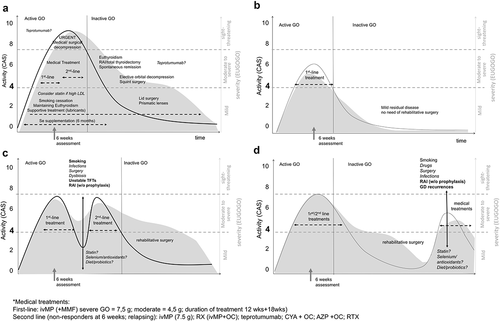Figures & data
Figure 1. The biphasic course of GO according to the model of Rundle (Panel A). The shaded area represents the severity of GO graded according with the EUGOGO score (right axes). The black continuous line represents GO activity measured by the clinical activity score (CAS) (left axes). Dotted arrows and text in regular font outline the recommended therapies for each stage (active/inactive) and grade (mild, moderate to severe and sight-threatening). In italics fonts the treatments that might be useful in the future, but for which data are insufficient to support a recommendation. The gray arrow is the 6- weeks-follow up assessment and thereafter not-responders undergo a second line treatment. Patients developing sight-threatening GO (DON, corneal breakdown and sublussation of the eye globe) require urgent medical/surgical decompression.

Table 2. Efficacy of available treatments for GO. The response and relapse rate and efficacy in preventing dysthyroid optic neuropathy (DON) are reported.
